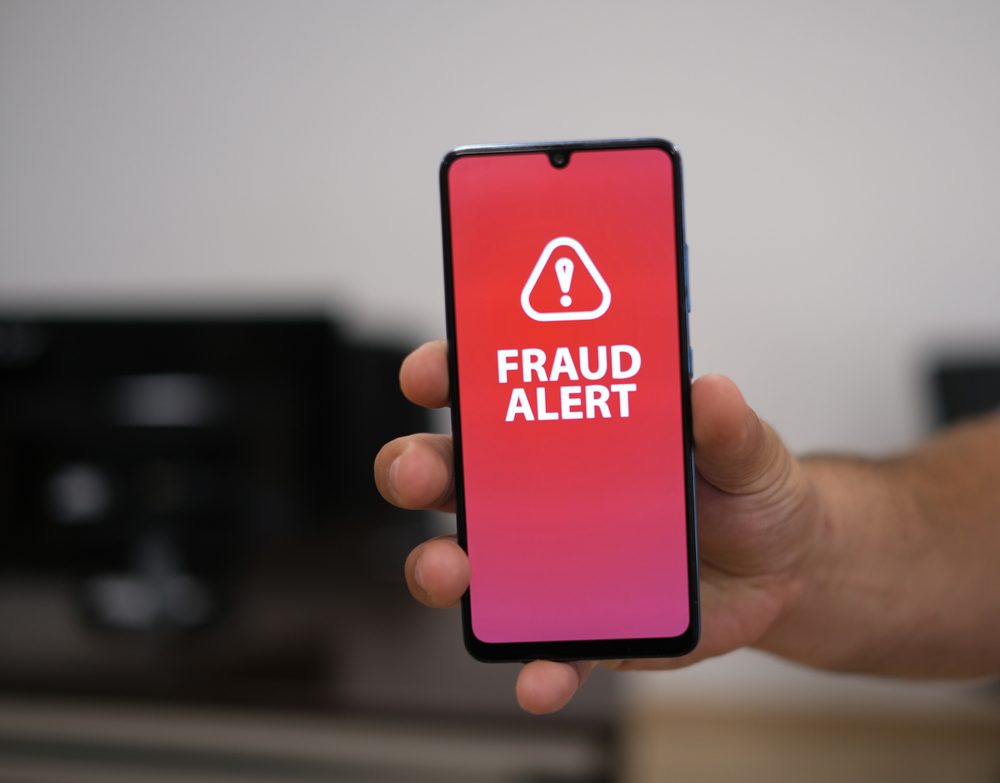“Your phone is your financial vault. Lose it carelessly, and you’re handing thieves an open door to your money.” Mobile phones have become financial lifelines. They hold mobile money accounts, banking apps, and access to sensitive transactions. But as convenience increases, so does risk. Criminals no longer need to hack into a bank’s system to steal money. All they need is to grab your phone. Within minutes, they can access your mobile money, reset your PIN, and wipe your account clean. This is not a futuristic cybercrime. It’s happening now. In taxis. In meeting rooms. On the streets. At restaurants. You could be next. How the scam works It starts with a simple theft. A thief spots an easy target someone using their phone in public, texting, or checking messages. In one swift move, the phone is gone. The phone can be snatched from you on a boda boda or car at a traffic jam hold. Once stolen, the criminal’s first goal is to unlock the device. If the owner has weak security, this is easy. Many victims leave their phones without passwords or use simple PINs like 1234. The next step is finding the mobile money PIN. Thieves know people save it in messages, contacts, or notes. If they find it, they access the money instantly. If the PIN isn’t stored on the phone, they try resetting it. Many telecom companies have weak security checks. Criminals call customer service pretending to be the owner, answer basic security questions, and get the PIN reset. Once they have access, they move fast. They withdraw all the money or transfer it to different accounts. Sometimes they convert it into airtime, which they later sell for cash. After emptying the account, they wipe the phone and sell it. It becomes another second-hand phone in a shop, ready for resale. Why this keeps happening Many people assume their phone is safe because they have a PIN or fingerprint lock. That’s a false sense of security. Criminals exploit weak security settings. Many users don’t enable encryption or strong passwords. Some even write their PINs in their phones. Telecom companies make it easy for criminals. Some allow PIN resets with minimal verification. A few basic personal details are often enough to take over an account. Victims react too late. Many people focus on finding the phone instead of blocking their mobile money access immediately. By the time they act, the money is gone. How to protect yourself Secure your phone like a bank vault. Use a strong password or PIN. Avoid common codes like birthdays or repeated numbers. If your phone allows it, enable fingerprint or face recognition. Never store your mobile money PIN on your phone. Do not save it in messages, contacts, or notes. If you must write it down, keep it somewhere safe, away from your phone. Lock your SIM card. Set a SIM lock PIN so criminals cannot remove it and use it on another device. Contact your mobile provider to check if they offer extra security features. Enable remote tracking and wipe features. If your phone is stolen, you should be able to locate it or erase all data. Google’s Find My Device and Apple’s Find My iPhone can help. Act fast when your phone is stolen. Call your bank and mobile provider immediately to block transactions. File a police report. Remotely lock or erase your phone before criminals gain access. Be careful of scam calls. Fraudsters may pretend to be customer service agents. They ask for PINs, passwords, or verification codes. Never share them. If unsure, hang up and call your bank directly. Final thought: your phone is a wallet guard it like one If someone tried to grab cash from your wallet, you wouldn’t ignore it. So why treat your phone differently? A stolen phone means lost money, stolen data, and a serious financial headache. The difference between being a victim and staying safe is how fast you act and how well you prepare. Don’t wait until it happens to you. Secure your phone today. Mr. Strategy
The collateral scam that keeps bleeding Ugandan banks dry
“A good con doesn’t need to be clever it just needs a willing victim.” Every few years, a financial institution gets burned by the same old scam: forged collateral security. The script is familiar a borrower presents a prime property as security, a high-profile valuer provides a glowing appraisal, and a bank officer, eager to meet loan targets, rushes approval. Then, the bomb drops: the title is fake, the valuation is inflated, and the borrower is nowhere to be found. This is not a hypothetical scenario. It happens again and again. The basics of collateral fraud A financial institution recently approved a multimillion-dollar loan to Subject 1, a businessman with a supposedly lucrative property deal. The collateral? A prime piece of land in an expensive neighborhood. The valuation report, prepared by a seemingly reputable firm, showed the land was worth three times the loan amount. Everything looked perfect until it wasn’t. Unknown to the bank, Subject 1 had colluded with Subject 2, a rogue land officer, and Subject 3, a corrupt valuer. The land records were altered, fake titles created, and a valuation cooked to look authentic. By the time the fraud was uncovered, Subject 1 had vanished, leaving the institution holding a worthless piece of paper. The real reason this keeps happening It’s not that fraudsters are getting smarter it’s that banks are failing at due diligence. Here’s what’s going wrong: Blind trust in valuation reports. Many institutions treat valuation reports as gospel instead of a piece of evidence that needs cross-verification. Weak verification of land titles. Just because a document looks official doesn’t mean it’s real. A forged title can look more legitimate than the original if insiders are involved. Loan officers under pressure to hit targets. Quick approvals mean bonuses, but a bad loan is worse than no loan. Rushed due diligence is a recipe for disaster. Internal collusion. Some frauds don’t happen without inside help. Greedy employees play a role in ensuring fraudulent loans sail through the approval process. How to bulletproof your due diligence Never rely on a single valuation. Get an independent second opinion. If the numbers don’t align, dig deeper. Verify land ownership independently. Cross-check with official land registries. Go beyond the digital records and physically inspect land titles. Conduct forensic due diligence on borrowers. Look beyond surface details. A fraudster’s history will always have red flags previous loan defaults, a web of shadowy business dealings, or sudden, unexplained wealth. Scrutinize internal approvals. Any unusually fast-tracked loan should trigger alarms. If something looks too perfect, it deserves extra scrutiny. Audit loan officers. Regular internal audits can reveal patterns of bias or leniency towards certain clients, indicating possible collusion. Final word: if it’s too good, it’s probably a scam The problem isn’t just fraudsters it’s the willing victims in financial institutions who ignore the warning signs. The best protection isn’t more technology or more complex paperwork it’s discipline in due diligence. Slow down, ask the right questions, and stop approving loans on the strength of fancy documents. Because when the deal collapses, the only thing left is a worthless title and a very expensive lesson.
The collateral scam that keeps bleeding Ugandan banks dry
“A good con doesn’t need to be clever it just needs a willing victim.” Every few years, a financial institution gets burned by the same old scam: forged collateral security. The script is familiar a borrower presents a prime property as security, a high-profile valuer provides a glowing appraisal, and a bank officer, eager to meet loan targets, rushes approval. Then, the bomb drops: the title is fake, the valuation is inflated, and the borrower is nowhere to be found. This is not a hypothetical scenario. It happens again and again. The basics of collateral fraud A financial institution recently approved a multimillion-dollar loan to Subject 1, a businessman with a supposedly lucrative property deal. The collateral? A prime piece of land in an expensive neighborhood. The valuation report, prepared by a seemingly reputable firm, showed the land was worth three times the loan amount. Everything looked perfect until it wasn’t. Unknown to the bank, Subject 1 had colluded with Subject 2, a rogue land officer, and Subject 3, a corrupt valuer. The land records were altered, fake titles created, and a valuation cooked to look authentic. By the time the fraud was uncovered, Subject 1 had vanished, leaving the institution holding a worthless piece of paper. The real reason this keeps happening It’s not that fraudsters are getting smarter it’s that banks are failing at due diligence. Here’s what’s going wrong: Blind trust in valuation reports. Many institutions treat valuation reports as gospel instead of a piece of evidence that needs cross-verification. Weak verification of land titles. Just because a document looks official doesn’t mean it’s real. A forged title can look more legitimate than the original if insiders are involved. Loan officers under pressure to hit targets. Quick approvals mean bonuses, but a bad loan is worse than no loan. Rushed due diligence is a recipe for disaster. Internal collusion. Some frauds don’t happen without inside help. Greedy employees play a role in ensuring fraudulent loans sail through the approval process. How to bulletproof your due diligence Never rely on a single valuation. Get an independent second opinion. If the numbers don’t align, dig deeper. Verify land ownership independently. Cross-check with official land registries. Go beyond the digital records and physically inspect land titles. Conduct forensic due diligence on borrowers. Look beyond surface details. A fraudster’s history will always have red flags previous loan defaults, a web of shadowy business dealings, or sudden, unexplained wealth. Scrutinize internal approvals. Any unusually fast-tracked loan should trigger alarms. If something looks too perfect, it deserves extra scrutiny. Audit loan officers. Regular internal audits can reveal patterns of bias or leniency towards certain clients, indicating possible collusion. Final word: if it’s too good, it’s probably a scam The problem isn’t just fraudsters it’s the willing victims in financial institutions who ignore the warning signs. The best protection isn’t more technology or more complex paperwork it’s discipline in due diligence. Slow down, ask the right questions, and stop approving loans on the strength of fancy documents. Because when the deal collapses, the only thing left is a worthless title and a very expensive lesson.




